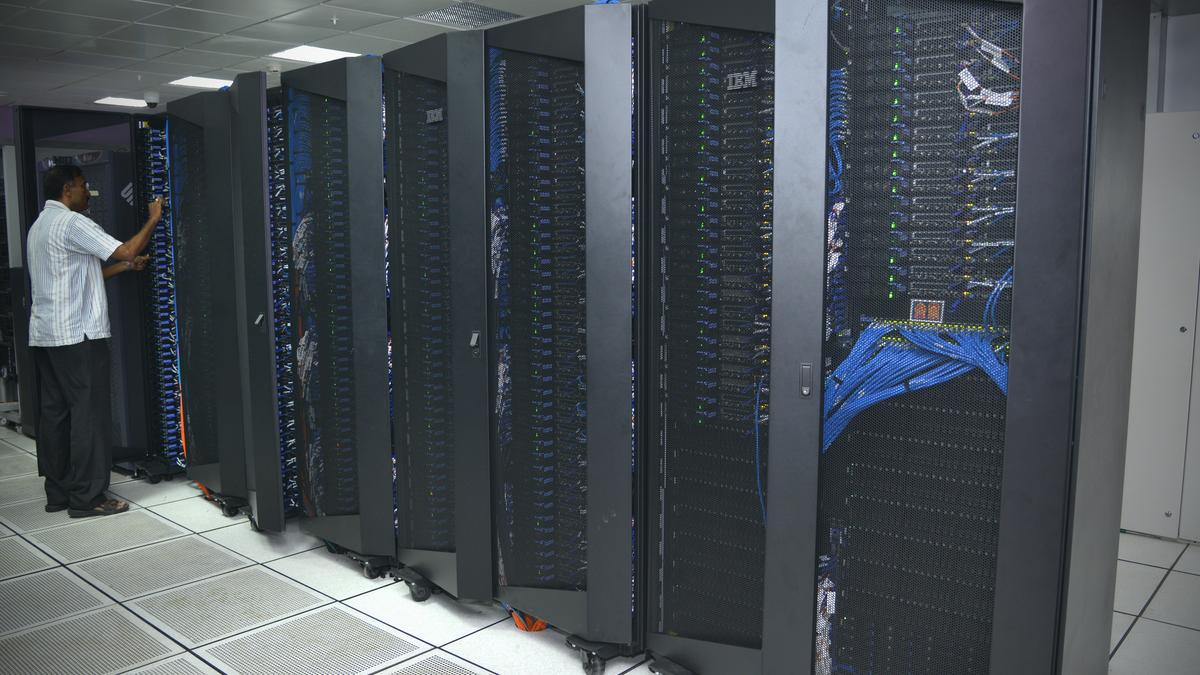Supercomputers vs Normal Computers

- 26 Sep 2025
In News:
Supercomputers are the giants of the computing world, built to solve problems far beyond the reach of everyday computers. Unlike normal laptops or desktops, which are designed for routine tasks like web browsing, office work, gaming, or media consumption, supercomputers tackle extremely complex, data-intensive problems—such as weather forecasting, simulating nuclear reactions, modelling the early universe, or training advanced artificial intelligence models.
Key Differences Between Normal Computers and Supercomputers
|
Aspect |
Normal Computers |
Supercomputers |
|
Processing Power |
Billions of operations per second (GFLOPS) |
Quintillions per second (ExaFLOPS); can complete tasks that would take ordinary machines years in just hours |
|
Architecture |
1–16 CPU cores |
Thousands to millions of CPUs and GPUs working in parallel |
|
Memory & Storage |
GB–TB range |
Petabyte-scale storage with parallel file systems |
|
Networking |
Standard Ethernet or Wi-Fi |
Ultra-fast interconnects like InfiniBand or Omni-Path |
|
Cooling & Power |
Small fans, low power consumption |
Liquid or immersion cooling; power requirements comparable to a small town |
|
Use & Access |
Direct individual use |
Remote access via job schedulers for research institutions and industrial applications |
India’s Supercomputing Initiative
- India’s journey in high-performance computing began in the late 1980s, largely as a response to export restrictions from Western countries. This led to the development of indigenous supercomputing capabilities under the National Supercomputing Mission (NSM).
- The mission has given rise to the PARAM series and the newer AIRAWAT supercomputers, positioning India on the global high-performance computing map.
- These systems are designed not just for academic research but also for solving real-world problems in climate modelling, healthcare simulations, and energy research. They exemplify India’s strategic approach to technological self-reliance and digital sovereignty.
Global Supercomputing Race
- Supercomputing has become a key area of technological competition. In Europe, Germany recently commissioned JUPITER, the continent’s first exascale supercomputer, capable of performing more than an exaFLOP (a quintillion calculation per second). This milestone highlights the global drive toward faster, more energy-efficient, and scalable computing infrastructures, with countries investing heavily in next-generation architectures.
Significance for India
For India, supercomputers are not only tools for scientific advancement but also instruments of national development. They support critical sectors such as meteorology, disaster management, nuclear research, and artificial intelligence, enhancing both strategic and developmental capacities. The NSM’s growing network of high-performance machines demonstrates India’s commitment to bridging the technological gap with global leaders.
